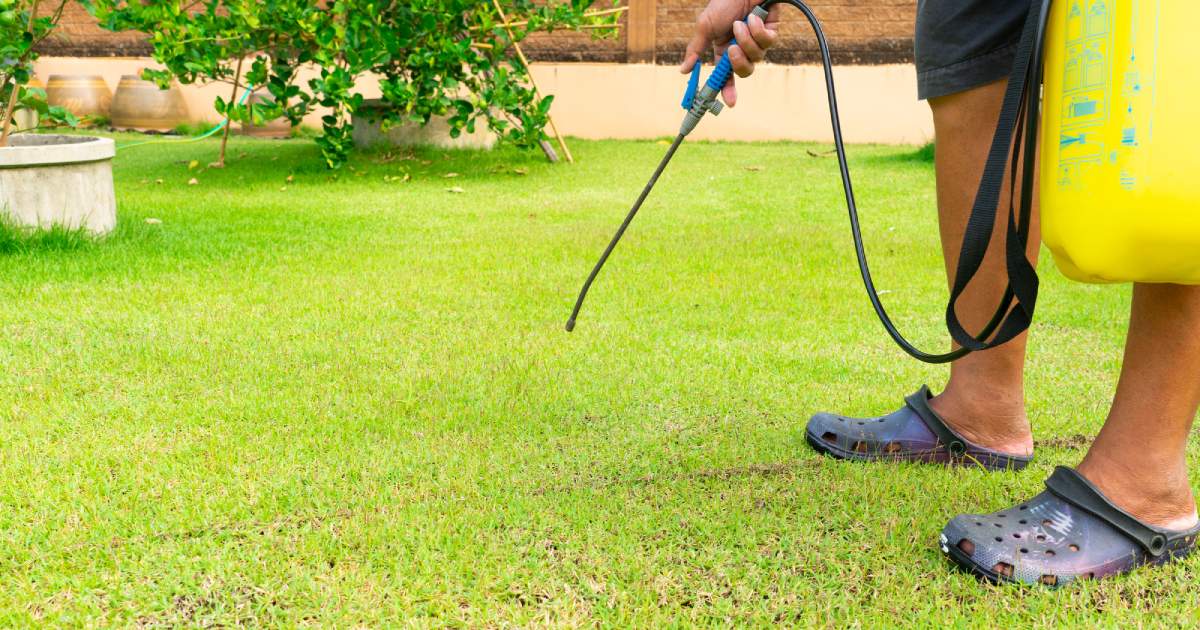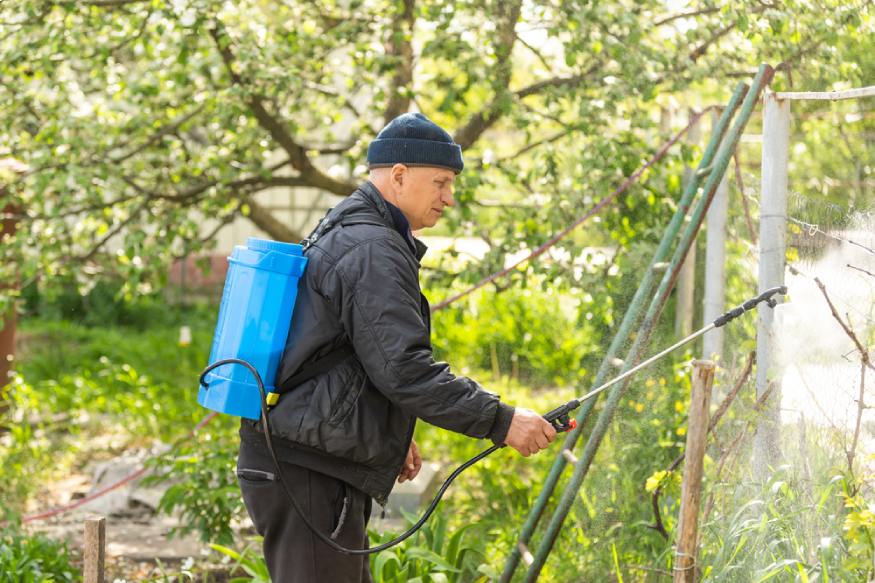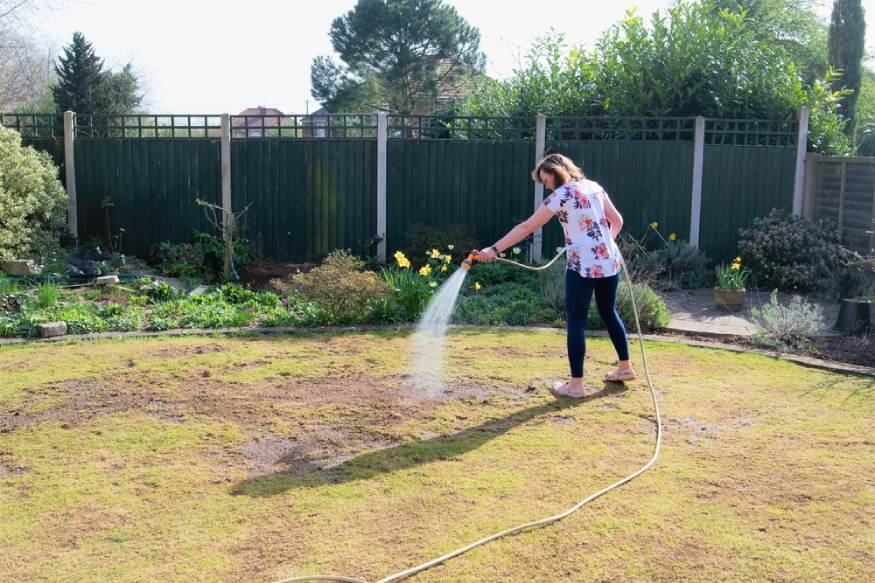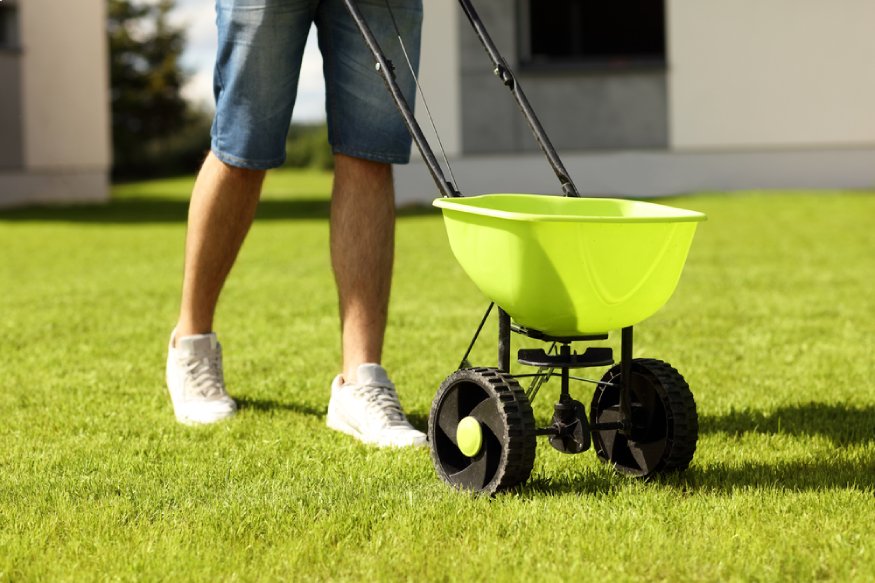Let’s face it, pulling weeds is not a fun way to spend your weekend. Luckily, there is a less labor-intensive alternative — a pre-emergent weed killer. It’s a herbicide that you apply two to three times per year to prevent those unsightly weeds from ruining your lawn or flower bed in the first place.
But what is a pre-emergent weed killer exactly and how does it kills weed? This guide takes a closer look at pre-emergents, including application tips.
What Is a Pre-Emergent Weed Killer?
As its name suggests, a pre-emergent weed killer eliminates weeds before they can establish and emerge above the soil. This herbicide typically comes in dry or liquid form.
With powder pre-emergents, you will need spray it with water to activate the chemicals and allow the solution to reach the weed seedlings underneath the soil. On the other hand, liquid counterparts are ready to use out of the box, however there are some products that require water dilution before application.
Although different in terms of application, both types of pre-emergents form a barrier that kills the weed seedling before it reaches the surface of the soil.
How Pre-Emergent Herbicides Work
Contrary to popular belief, pre-emergents do not kill the seeds of weeds; they prevent the root cells from dividing.
Unable to divide, the roots cannot grow and support the plant with water and nutrients. As a result, the weed seedlings die of dehydration.
Pros and Cons of Pre-Emergent Weed Killers
Like anything, pre-emergent weed control products have pros and cons. Here are some of the things you need to consider before using them.
One of the advantages of using a pre-emergent weed killer is it kills weeds before they appear above the soil. Once the seedling hits the layer of pre-emergent, the herbicide’s active ingredients like treflan and surflan, which acts as a barrier, immediately stop the weeds from being established.
Another upside is that one application can last around three months, so you do not have to keep reapplying to keep the weeds in check. Moreover, most pre-emergents are not dangerous to existing plants; they only affect new seedlings.
To summarize, pre-emergents can:
- Prevent weeds from appearing above the soil
- Last several months per application
- Don’t affect established plants
If you already have existing weeds, pre-emergents, unfortunately, will not kill them. Since pre-emergent weed killers are non-selective herbicides, they can also kill any seeds that they come into contact with.
There is also a specific process to follow. According to the Nevada Extension Service, pre-emergents must be watered in with at least half an inch of water to activate. The timing of the application is also critical. Once the weed seedlings break the soil surface, it is too late for pre-emergents.
Clemson Extension warns that the over-application of pre-emergents can damage existing plants. Do not apply a ‘weed and feed’ product and a separate pre-emergent in the same place.
Pros
- Keep weeds from sprouting or appearing above the soil
- Last several months per application
- Don’t affect established plants
Cons
- Do not affect existing weeds
- Prevent all seeds from germinating, not just weed seeds
- Require water to activate
- If applied in a ‘weed and feed’ product, it may apply nitrogen at the wrong time of the year
- Over application can damage existing plants
Where Can I Use Pre-Emergent Herbicides?
You cannot use pre-emergent weed killers everywhere. While the label on a pre-emergent will tell you where you can use the product, here are some general rules of thumb to follow.
On The Lawn
Pre-emergents work well on established lawns to prevent summer and winter weeds. However, they are not recommended for recently laid sod because the chemicals will prevent the sod from establishing roots and the seed from growing. It is recommended to wait a year after the lawn is sodded or seeded before applying pre-emergent products.
In A Flower Bed
You can also use pre-emergent weed killers in flower beds. Keep in mind that if you are sowing annual seeds, the pre-emergent will also kill them.
In A Vegetable Garden
Vegetable gardens can also benefit from pre-emergent weed killers. However, not all commercial pre-emergents are safe to use around food crops. Always read the label or opt for an organic pre-emergent (typically made from corn gluten) for peace of mind.
Remember, pre-emergents prevent all seeds from germinating, not just weeds. Make sure the area you are applying the pre-emergent will not be sown with seed until after the pre-emergent has broken down. The label will tell you how long that takes.
When Should You Use Pre-Emergent Weed Control?
As mentioned earlier, timing is key when applying this herbicide. If you apply too late, the weeds will be too old for the pre-emergent to work. Administering it too early can also lead to early treatment failure, requiring reapplication again.
As a general rule of thumb, you should apply the pre-emergent in the early spring to kill summer weeds and early fall to kill winter weeds.
In The Spring
Guidelines for spring applications are based on when crabgrass germinates. More specifically, when the average temperature reaches 57 degrees F at the one-inch soil depth. You should apply the spring pre-emergents when the soil reaches 55 degrees F for four days in a row.
In The Fall
During fall, you should only apply pre-emergents when the soil temperature falls to 70 degrees F for four days in a row.
How To Use Pre-Emergent Herbicides?
You should use pre-emergent herbicides according to their label. Keep in mind that more is not better — using a herbicide in a manner that is inconsistent with the label violates federal law.
Here are some things to keep in mind when using pre-emergent herbicides:
- Wear the type of personal protection equipment the label tells you to. At a minimum, you should wear a long-sleeved shirt, long pants, gloves, and closed-toe shoes.
- Using pre-emergents requires some site preparation. You need to remove dead plants, debris, and anything else that covers the soil. The pre-emergent must hit the soil to form a barrier that stops seeds from growing.
- Most pre-emergents must be watered in to activate—plan to water after spreading the pre-emergent and put down at least ½ inch of water. The label will tell you if you need to water and exactly how much water to put down.
Granular
Granules are easier to apply than liquid counterparts. You can scatter them on your lawn or use a fertilizer spreader or hand-cranked spreader for faster application and even distribution. Then, use your garden hose to water the area. Alternatively, you can turn on the sprinklers. Remember, water is needed to activate pre-emergents.
Liquid
Most liquid pre-emergents are already pre-mixed with water so you can immediately use them right out of the box. They can be tricky to use, especially when treating areas with established beds of ornamental plants covering the bare soil. As much as possible, you should spray as close as possible to the soil.
Keep in mind that there are pre-emergent weed killer concentrates. This type requires diluting before application.
Types Of Pre-Emergent Weed Killers
In addition to coming in different forms, pre-emergents can also have different active chemicals to prevent different weed seedlings. Not all these products are available to homeowners in all states.
Here are a few active ingredients for turf and ornamental areas.
Grassy Weed Pre-Emergents
Grassy weeds have blades instead of larger leaves. Bermuda grass is a grassy weed in your flower bed.
Benefin
Benefin kills grasses and some small-seeded broadleaf weeds. Water the soil right away because Benefin is volatile and can evaporate quickly. It is usually sold in a granular form. Benefin is safe for use around ornamental trees, shrubs, and flowers.
Corn Gluten Meal
Corn gluten meal is allowed in organic gardens. However, it is not as effective as synthetic pre-emergents but kills grasses if used properly.
Broadleaf Pre-Emergents
Broadleaf plants are plants like dandelions. They have leaves that are broader than the blades grassy weeds have.
Atrazine
Atrazine kills broadleaf weeds. It is used on lawns. Do not get it in the root zone of trees, shrubs, and flowers you want, as it can kill them.
Isoxaben
Isoxaben only kills broadleaf weeds. However, it will kill some ornamentals, so use it carefully.
Frequently Asked Questions
Can pre-emergents damage your lawn?
If pre-emergents are over-applied, they can damage your lawn. Over application typically happens when someone spreads a ‘weed and feed’ product on their grass and applies a separate pre-emergent. The ‘weed and feed’ product already contains a pre-emergent, so the combination damages the lawn.
What is a post-emergent weed killer?
Post-emergent weed killer is a herbicide that kills weeds while the plants are growing above the soil surface.
Why isn’t the pre-emergent weed killer working?
Pre-emergent weed killers work by forming a barrier in the soil that the weed seedling encounters as it grows. The pre-emergent gradually breaks down, so eventually, weeds will grow through it. If the soil has been disturbed after the pre-emergent is applied, that leaves a break in the barrier where weeds can grow. Common disturbances are a dog digging, children playing on the soil or lawn, or tilling.
Are Pre-Emergents For You?
Pre-emergents kill germinating seeds before they reach the top of the soil. When applied properly, this gives you a weed-free lawn or flower bed. However, use caution when applying pre-emergents as they will kill all germinating seeds, not just the weed seeds. While pre-emergents are safe and effective when applied correctly, failure to read the label may mean you kill existing plants or fail to kill new weed seeds. Finally, pre-emergents are just one aspect of normal lawn maintenance.




